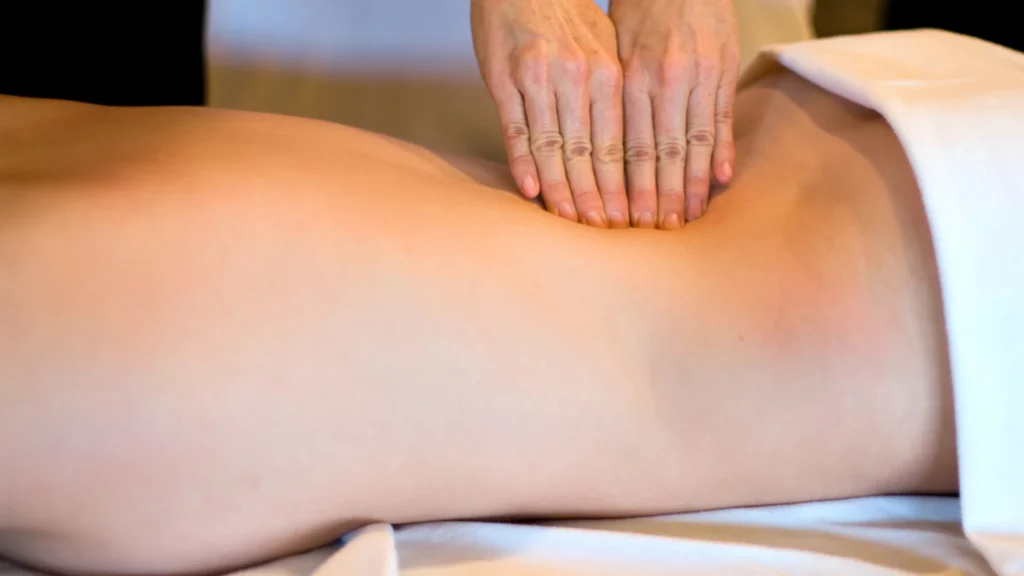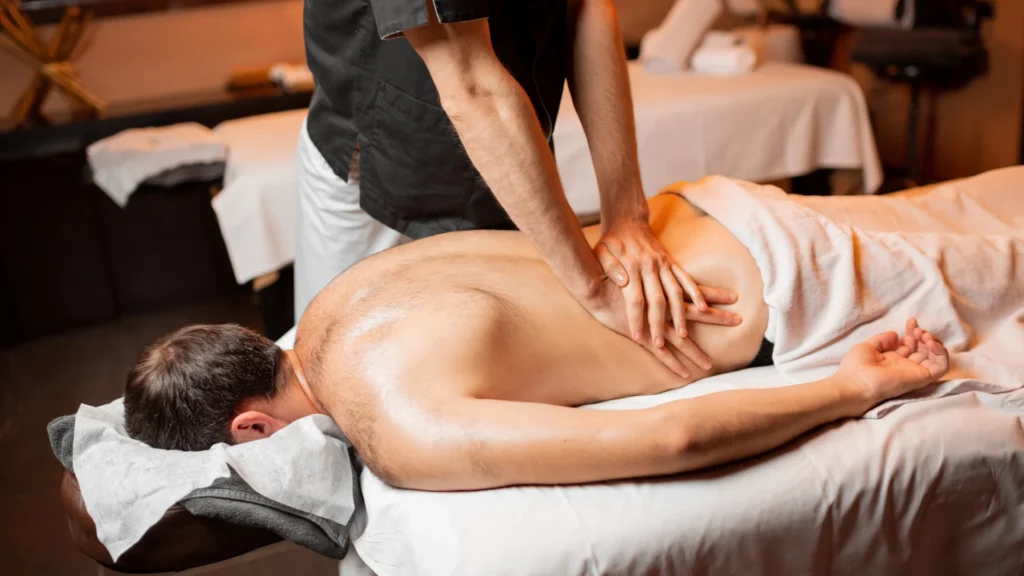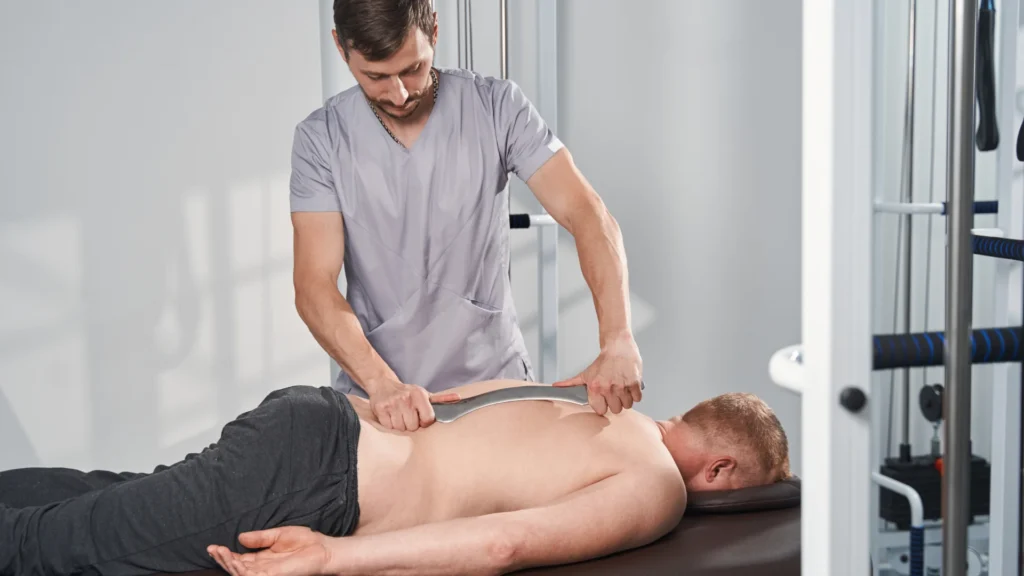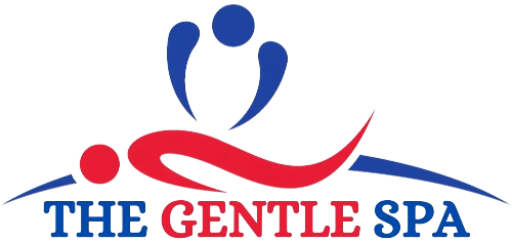In this comprehensive blog post on “Will Deep Tissue Massage Help Lower Back Pain?” you’ll discover:
- An in-depth understanding of lower back pain, its causes, and why it’s more than just a physical issue.
- A detailed exploration of deep tissue massage, how it works, and what sets it apart from other massage types.
- Insightful tips on integrating massage into your treatment plan and self-care strategies to enhance the benefits.
Ready to discover how Deep Tissue Massage helps lower Back Pain and enhance your overall well-being? Let’s Get Started.
Quick Answer:
For those in a hurry: Yes, Deep tissue massage can be an effective treatment for lower back pain, offering relief by targeting deeper layers of muscle to reduce chronic tension. It’s essential to find a qualified therapist and communicate your pain levels and preferences. While deep tissue massage benefits many, it’s not suitable for all types of back pain, so consulting with a healthcare professional beforehand is advised.
Jump To:
What Causes Back Pain?
Lower back pain can be a real thorn in your side, can’t it? It’s like your back’s way of saying, “Hey, pay attention to me!” But what’s really going on back there? Well, it’s not always straightforward. It could be a muscle acting up, a nerve getting too chatty, or sometimes, it’s a bit more complex.
Why Does Your Back Hurt?
There are many reasons your back might be on the fritz. It could be from lifting something incorrectly or sitting too long at your desk (we’ve all been there), or it might be something more chronic. Aging, lifestyle habits, and even stress – they all have their say in your back’s well-being.
And here’s a twist – it’s not just about the physical stuff. Our backs don’t just carry groceries; they carry our stresses, anxieties, and those long days at work. It’s all connected – your mind, body, and your back.

How Do You Manage Back Pain?
There’s a whole menu of options when it comes to fixing it. Some folks go for the meds, like ibuprofen, while others might try yoga or physiotherapy. The trick is finding what works for you, and that’s where things like deep tissue massage come into play.
NOTE: If You’re Totally new to Deep Tissue Massage and Aren’t sure about what actually happens in it, be sure to check out my Following Guide: The Basics Of Deep Tissue Massage: Benefits and Techniques Applied
Benefits of Deep Tissue Massage for Back Pain
It Helps to Relax Those Tight Muscles of Your Back
One of the big wins with deep tissue massage is how it helps your muscles chill out. Imagine your muscles are like tight, overwound springs. Deep tissue massage works to slowly unwind these springs, easing the tension and helping to relieve that nagging pain in your lower back.
It Boosts Blood Flow Around Your Back
But it’s not just about easing muscle tension. Deep tissue massage gets your blood flowing better in the targeted areas. Why does that matter? Well, improved circulation means more oxygen and nutrients getting to your muscles, which helps in healing and reducing pain.
It Flushes Out the Bad Stuff
Here’s another cool thing – deep tissue massage can help eliminate pain-causing chemicals in your muscles. Think of it as a detox for your muscles, flushing out the stuff contributing to pain and discomfort.
And it’s not just all talk. I’ve seen firsthand in my practice how deep-tissue massage has brought real relief to people struggling with lower back pain. Patients often report feeling more flexible, less tense, and, most importantly, experiencing less pain.

What are the disadvantages of massage for back pain?
While massage therapy is generally safe and beneficial for back pain, there are some potential disadvantages or risks to consider:
- Overuse Injuries: Too much pressure or frequent massages can lead to overuse injuries or worsen existing conditions.
- Temporary Discomfort: Some individuals may experience temporary soreness or discomfort following a massage, especially a deep tissue massage.
- Inappropriate for Certain Conditions: Massage may not be suitable for certain back conditions, such as acute injuries, spinal fractures, or severe osteoporosis.
It’s always important to seek advice from a qualified professional to determine the most appropriate treatment for your specific back pain condition.

Who Can Benefit from Deep Tissue Massage? Is It for Everyone?
Ideal Candidates for Deep Tissue Massage
Let’s discuss who can gain the most from deep tissue massage.
If you’re someone who’s been battling with that stubborn lower back pain – the kind that makes you groan every time you bend over – then this could be your ticket. It’s beneficial for those dealing with chronic pain or muscle tension that just won’t quit.
When Deep Tissue Massage Might Not Be the Best Fit?
Now, it’s important to remember that deep tissue massage isn’t a one-size-fits-all solution. If you’ve got specific conditions – like osteoporosis and certain types of arthritis, or you’re recovering from surgery – deep pressure might not be the best idea. Safety first, always!
Making the Right Choice for Your Back
Deciding whether deep tissue massage is right for you can feel like a puzzle.
But here’s the key: communication!
Talk to a professional therapist (like yours truly!) about your specific pain points and health history. We can help you determine if this is the right path for you or if another route might suit you better.

How do you integrate deep tissue massage into your treatment plan?
If you’re pondering when to slot deep tissue massage into your back care routine, think of it as a piece of the puzzle.
It’s perfect when you’ve tried the basic stuff – like rest and over-the-counter meds – but your back still feels like it’s in a knot. It can be a great addition, especially when looking for something more to ease that persistent ache.
Partnering Massage with Other Treatments
Now, deep tissue massage isn’t a lone ranger. It plays well with others! Pairing it with physical therapy, chiropractic adjustments, or even acupuncture can create a powerhouse combo for tackling back pain. It’s all about creating a well-rounded plan that addresses your pain from all angles.
How often and how long do you take to get it to lower back pain?
You might wonder, “How much massage do I need?” It’s not an exact science, but generally, starting with a session every other week can give your body time to respond and adjust. As for the duration, it can vary, but a 60 to 90-minute session is a good ballpark to really address those deep tissue areas without overdoing it.
Self-Care Tips and Exercises to Lower Back Pain
Pairing your deep tissue massage with some simple at-home exercises can be like adding a turbo boost to your back care regimen.
Think about gentle stretches, yoga poses, or even light core strengthening exercises. These can help keep your muscles flexible and robust, reducing the likelihood of pain creeping back.
Note: If you want to Give It a Try at Home, Check out my following Guide: “The Best Way to Get a Deep Tissue Massage at Home,” to learn it step-by-step.
Lifestyle Tweaks: Small Changes, Big Impact
It’s not just what you do in the massage room or at the gym that counts. Your everyday habits play a huge role in managing lower back pain.
Consider things like improving your posture, especially if you’re desk-bound, or being mindful of how you lift heavy objects. These might seem small, but trust me, they add up in keeping your back happy.
Making the most out of your deep tissue massage sessions is all about maintenance. Stay active, stretch, and listen to your body between sessions. If it’s saying, “Hey, take a break,” or, “I need a bit of a stretch,” then it’s wise to heed that call.

Final Thoughts On Will Deep Tissue Massage Help Lower Back Pain
let’s take a moment to reflect. We’ve explored how this type of massage can be a powerful tool in your arsenal against that nagging back pain. From relaxing tight muscles to improving blood circulation, it’s not just a feel-good remedy; it’s a feel-better strategy.
But remember, the journey to a pain-free back isn’t just about what happens on the massage table. It’s also about the little things you do daily – the stretches, the posture checks, and listening to your body. These are the unsung heroes in your back care story.
I encourage you to explore deep-tissue massage as part of your plan to tackle lower back pain. It might just be the missing piece you’ve been looking for. And as always, finding the right therapist and staying in tune with your body’s needs are key.
I’d love to hear your stories and experiences with deep tissue massage. Have you tried it? Did it bring you the relief you were hoping for? Your journey could inspire others to take that first step towards a more comfortable, pain-free life.
FAQs Related to Massage and Lower Back Pain
1. What is the best massage for lower back pain?
The best massage for lower back pain often depends on the individual’s specific condition and preferences. However, deep tissue massage is widely regarded as highly effective. It targets deeper layers of muscle and connective tissue, addressing chronic muscle tension and knots that can contribute to lower back pain. Other types, like Swedish massage or trigger point therapy, can also be beneficial, depending on the nature of the pain and the individual’s tolerance for pressure.
2. Is it OK to massage lower back pain?
Yes, it’s generally OK to massage lower back pain, but with a few caveats. First, it’s crucial to identify the cause of the pain. For muscular issues, massage can be very beneficial. However, if the pain is due to an underlying medical condition, like a herniated disc or osteoporosis, it’s essential to consult with a healthcare professional before proceeding with massage therapy. Also, the intensity and type of massage should be appropriate for the individual’s pain level and physical condition.
3. Is a deep tissue massage gun good for lower back pain?
Yes, A deep-tissue massage gun can be effective for lower back pain, especially for providing targeted relief to tense and knotted muscles. These devices offer percussive therapy, which can help to increase blood flow, reduce muscle stiffness, and improve mobility. However, using them correctly is essential – avoiding bony areas and not applying too much pressure on sensitive spots. As always, it’s advisable to consult with a therapist or healthcare provider to ensure this tool is appropriate for your specific condition.






